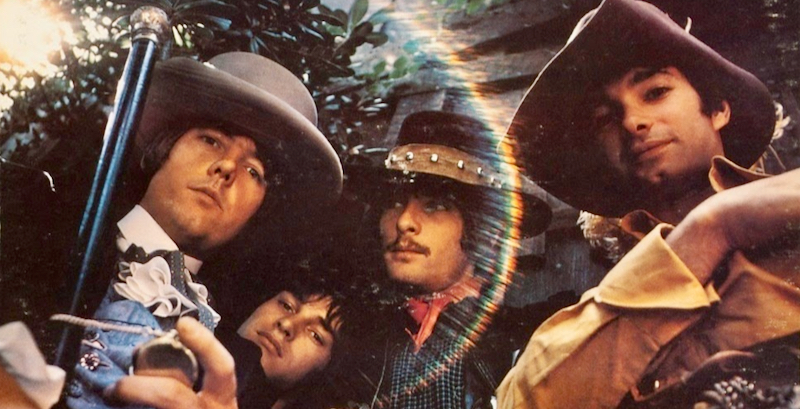
“I’m the devil,” he says, allowed to introduce himself. Our heroine stands by, too cool to care. She can’t see the danger.
And though the album is titled “All the Good That’s Happening,” nothing but bad is going down in “Lemmon Princess,” a cautionary tale from L.A. band the Leaves.
“I wanted it to be a commentary on the danger of getting involved with the unknown — maybe even the occult,” says the ditty’s singer and composer, Jim Pons.
In late 1966, at a time when extended jams were defining the new psychedelic sounds out of California, “Lemmon Princess” offered a short disorienting trip down the rabbit hole. Running all of 2 minutes. The swirling waltz and narrator’s matter-of-fact tone belie the tale being told, that of a silly young lady’s demonic possession.
Pons looks back on the song he’s barely listened to in a half century. “Much too fast and frivolous,” he tells Psychedelic Sight. “Not as dark and moody as it should have been.”
The Devil, of course, soon would become a leading man in underground rock and heavy metal. Devils, both imagined and real, would be with the rock community for decades. But “Black Sabbath” was a good three years away; our song plays like a Fractured Fairy Tale.
“Lemmon Princess” begins with a simple spoken command: “Play.” A harpsichordist complies, giving the number a classical feel, at least until the instrument becomes buried in the deeply psychedelic second act.
The first half of the song is mostly a conversation between the devil and the disbelieving airhead. He makes sure it doesn’t last long.
“You can’t play games with me, says he / And steps inside her, look and see.”
Harpsichord abruptly gives way to the distorted guitar we remember from the Leaves’ blistering version of “Hey Joe.” Cue the spinning 360-degree camera move as listeners descend via a creepy and repetitive chorus about her “flowing long and pretty” hair. The maiden, one assumes, is lost to the gentleman from the underworld.
The minor mystery of why “Lemmon” vs. “Lemon” was solved by Pons.
“Not a typo,” he says. “Because it was intended to be a kind of ‘devilish’ fantasy I wanted to disassociate her from the actual fruit.” No doubt appreciated by the California Fresh Fruit Association. No connection, either, with the Lemon Princess Spirea shrub, although Pons recalls: “We were into certain shrubs at the time.” (See: Lemon Gorilla Princess.)
Pons and his pal Bobby Arlin, the lead guitarist, recorded the ditty at Capitol Records (hence availability of a harpsichord). “Lemmon Princess,” the album’s closer, first appeared as a single in December 1966, b/w the album’s opener, “Twilight Sanctuary.” They provided the too-few highlights on the group’s 1967 sophomore album, produced by Capitol’s Nick Venet.
The Leaves were on their last legs, unable to follow up on the success of the propulsive “Hey Joe” that swept the nation a year before.
“We had lost our spontaneity by then and everything was a struggle,” Pons has said. He soon would move on to the hitmaking Turtles, and later Frank Zappa’s (Flo & Eddie) band. “All the Good That’s Happening” would be the Leaves’ last album.
Liner notes: European audiences were introduced to the American “Princess” with its inclusion on the three-CD set “The Psychedelic Years: 1966-1969,” from Britain’s Castle Communications. … “All the Good That’s Happening” was out of print for almost a decade in the CD era, but returned in 2010 via Grapefruit Records.
First heard this on The Psychedelic Years compilation which was nicked when o was out DJing sometime at the turn of the millennium. As for the track itself, it is a perfect use of two minutes.
The Leaves are very underrated. Kill me, but I prefer their version of “Hey Joe” over Jimi’s.